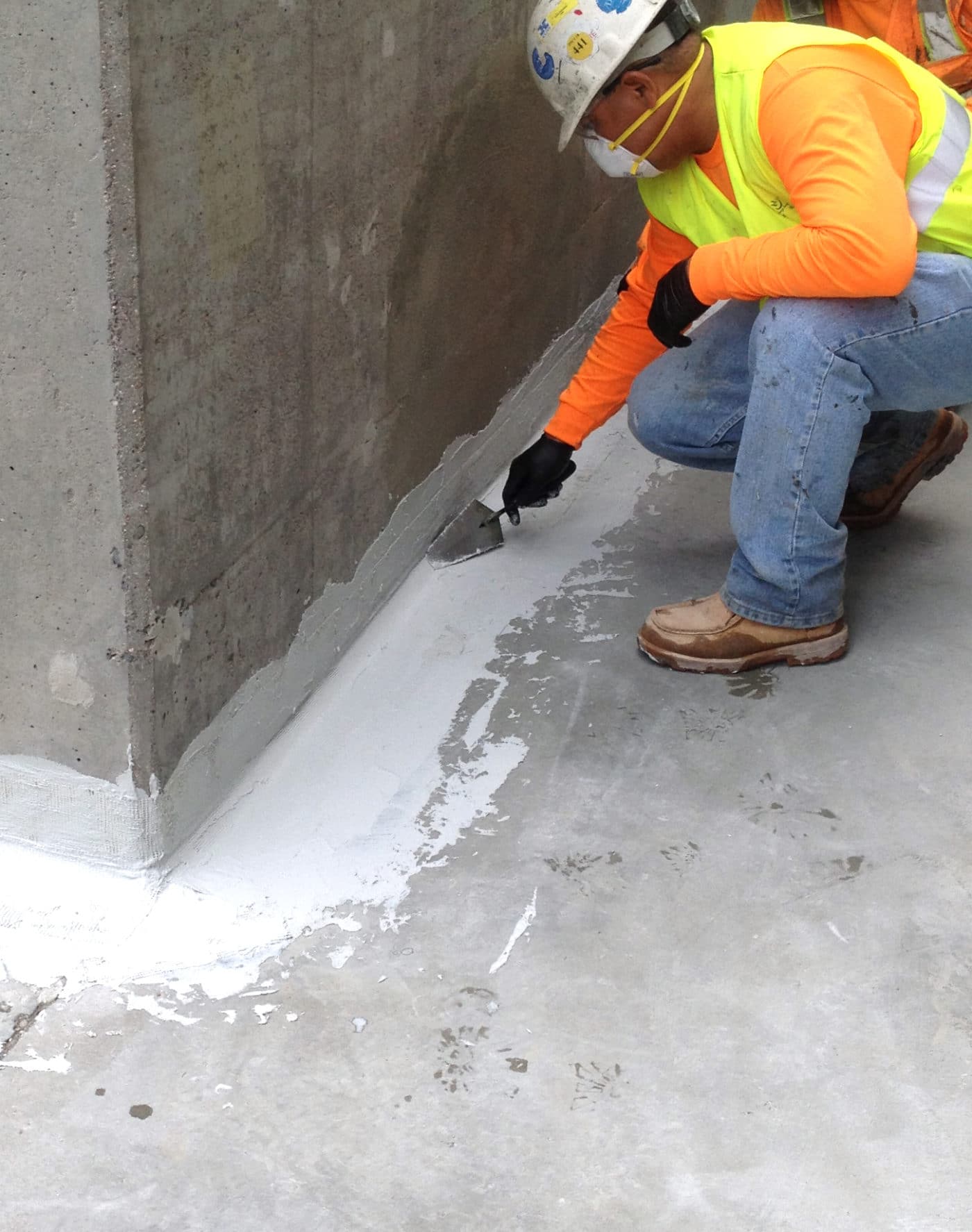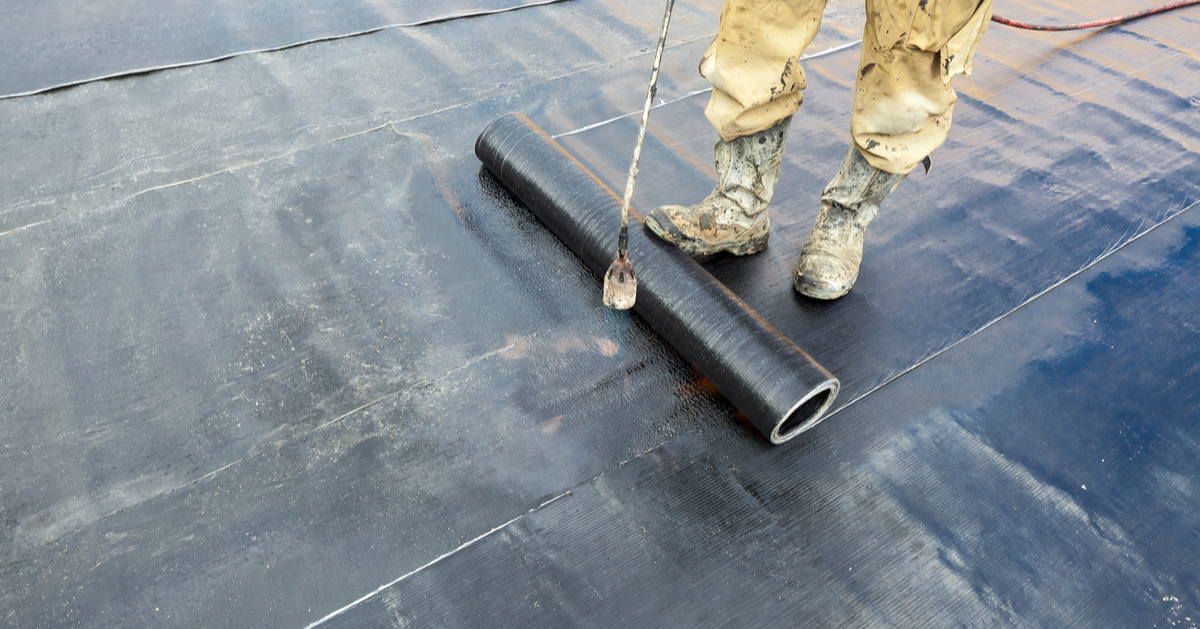The Ultimate Guide to Stopping Moisture Problems with Water Solutions
Just How Waterproofing Works: A Thorough Check Out Techniques and Technologies
Waterproofing is vital for shielding structures from moisture-related damage. It entails different strategies and innovations that develop barriers versus water breach. Conventional methods, such as compacted clay, coexist with modern developments like liquid-applied membrane layers. Recognizing the subtleties of these approaches is crucial for reliable application. Nevertheless, the performance of any kind of waterproofing solution pivots not just on the methods utilized but additionally on ongoing maintenance and assessment. What are the crucial variables that influence lasting performance?
Comprehending the Fundamentals of Waterproofing
Waterproofing is a vital procedure that shields frameworks from water invasion, which can result in substantial damages with time. This technique includes the application of various products and strategies created to develop a barrier against wetness. The key objective is to stop water from penetrating surfaces, which can trigger wear and tear, mold and mildew development, and structural instability.Various variables influence the choice of waterproofing technique, consisting of the sort of framework, its area, and environmental problems. Comprehending the physics of water activity and the homes of various materials is vital in selecting a reliable waterproofing solution.Effective waterproofing not only safeguards buildings but additionally improves their long life and integrity. Typically, it is incorporated right into the style stage of building and construction to assure complete defense. As awareness of water-related issues expands, the value of understanding waterproofing basics becomes significantly clear to architects, home builders, and homeowner alike.
Standard Waterproofing Methods
Conventional waterproofing methods have actually been used for centuries, depending on tried and true techniques and products to protect frameworks from water damage. Among the earliest approaches includes making use of clay, which, when compressed, develops a natural obstacle versus dampness. Additionally, bitumen, a sticky, black product originated from oil, has been used for its water-resistant buildings, usually applied to roofings and foundations.Another technique involves the application of lime-based plasters, which provide a breathable layer that allows moisture to run away while avoiding water access. Thatch roof covering, a conventional method still seen in some societies, supplies exceptional waterproofing as a result of its securely packed straw layers.Moreover, making use of rock and block has been popular, as these materials are inherently immune to water when correctly set up. On the whole, conventional waterproofing techniques stress the importance of picking proper materials and construction techniques to enhance durability against water invasion.
Modern Waterproofing Technologies
Innovations in contemporary waterproofing technologies have revolutionized the method structures are safeguarded from water damage. Ingenious techniques such as liquid-applied membrane layers and innovative sealers have improved the efficiency and versatility of waterproofing options. These modern technologies permit smooth application, reducing the threat of leaks and making sure comprehensive coverage over complex surfaces.Moreover, the combination of clever innovations, such as moisture sensing units and automated monitoring systems, enables real-time analysis of waterproofing performance. This aggressive approach facilitates prompt maintenance and decreases lasting repair costs.Additionally, innovations in spray-applied coverings use quick application and superb bond, adapting to different substrates while providing robust protection. Methods like polymer-modified systems additionally enhance flexibility and longevity, making them suitable for diverse settings. On the whole, modern-day waterproofing technologies not just minimize water breach yet also contribute to the durability and sustainability of structures, marking a substantial shift in the sector.
Products Made Use Of in Waterproofing
The performance of waterproofing solutions greatly relies upon the materials utilized in their application. Various materials are utilized to produce barriers against water access, each with one-of-a-kind homes matched for various atmospheres. Frequently utilized browse around this web-site materials include membrane layers, finishes, and sealants.Liquid-applied membranes, often made from polyurethane or acrylic, form a smooth obstacle that adjusts to complex surfaces. Sheet membranes, normally built from rubber or thermoplastic, offer resilience and are suitable for bigger areas. Furthermore, cementitious waterproofing materials, made up of cementitious substances, give outstanding bond and flexibility.Sealants made from silicone or polyurethane are look at here now necessary for joints and seams, ensuring extensive security. Sophisticated products, such as geo-composite membrane layers, incorporate multiple functions, improving performance. Generally, the option of waterproofing materials is crucial in achieving resilient and reliable water resistance, tailored to particular task demands and ecological problems.
Common Applications of Waterproofing
Waterproofing plays a vital duty in various industries, making sure the long life and honesty of frameworks. Usual applications include property services that safeguard homes, business framework that safeguards businesses, and commercial setups that require robust security against wetness. Comprehending these applications highlights the relevance of waterproofing in maintaining both safety and security and performance across various settings.
Residential Waterproofing Solutions
Many house owners encounter challenges with moisture invasion, making reliable residential waterproofing solutions important. Different techniques exist to resolve this issue, including interior and outside waterproofing systems. Inside services commonly include the application of sealants and layers to basement walls, which assist avoid water seepage. Exterior techniques typically include the installation of drainage systems and waterproof membranes that draw away water far from the foundation.Additionally, home owners may think about sump pumps to eliminate water build-up and dehumidifiers to control humidity degrees. Correct grading and making use of rain gutters likewise play an essential role in managing water circulation around the home. By applying these approaches, home owners can substantially decrease the threat of water damage and mold and mildew growth, making sure a dry and safe living setting.

Commercial Infrastructure Protection
Reliable waterproofing remedies play a critical duty in the defense of business facilities. Yard drainage Omaha. These methods are important for protecting structures, parking frameworks, and bridges from water damage, which can jeopardize structural honesty and result in pricey repair work. Common applications consist of the setup of membranes, finishings, and sealants that produce obstacles versus moisture seepage. Areas such as basements, roof coverings, and exterior wall surfaces are often focused on to assure durability and longevity. In addition, waterproofing systems can improve energy performance by protecting against water-related concerns that may bring about mold and mildew development and wear and tear. By implementing durable waterproofing procedures, homeowner can safeguard their investments and preserve functional efficiency, eventually adding to the general sustainability of business centers
Industrial Applications Overview
While various sectors face distinct difficulties, the demand for basement waterproofing staten island dependable waterproofing options continues to be a constant in industrial applications. Industries such as manufacturing, building, and power frequently come across atmospheres where moisture direct exposure can jeopardize architectural integrity and functional efficiency. In making centers, waterproofing is vital for securing machinery and materials from water damages. In building, it safeguards foundations and basements against groundwater infiltration. The energy sector depends on waterproofing for the protection of tools in hydroelectric plants and offshore frameworks. Furthermore, food handling sectors use waterproofing to guarantee hygiene and compliance with safety criteria. In general, efficient waterproofing services are vital for improving sturdiness, safety and security, and productivity across various commercial setups.
Upkeep and Longevity of Waterproofing Solutions
Waterproofing services are created to supply long-term protection versus dampness breach, normal maintenance is essential to assure their performance and durability. Regular assessments play a significant duty in identifying possible issues such as splits, peeling, or signs of water damages. Dealing with these troubles quickly can protect against further degeneration and costly repairs.Additionally, cleaning the surface area of waterproof locations helps eliminate dust and particles that can compromise the integrity of the waterproofing obstacle. It's additionally recommended to reapply safety coatings or sealants as advised by manufacturers to preserve ideal performance. Ecological aspects, such as UV direct exposure and severe climate condition, can affect the life expectancy of waterproofing products, making regular evaluation essential
Often Asked Concerns
Can Waterproofing Be Applied in Cold Weather Condition?
The concern of applying waterproofing in winter elevates issues concerning adhesion and curing. Lots of items might not carry out at their best in reduced temperatures, requiring mindful option and factor to consider of specific guidelines for effective application.
How Long Does Waterproofing Usually Last?
The duration of waterproofing efficiency differs based on materials and ecological aspects. Typically, it can last from 5 to 10 years, however regular upkeep and examinations are necessary to assure peak efficiency and longevity.
Is Do It Yourself Waterproofing Effective and Safe?
The effectiveness and safety of DIY waterproofing depend upon various variables, including worldly top quality and application strategy. While some individuals accomplish acceptable results, others might come across problems that jeopardize long-term defense and structural integrity.
What Are the Indications of Failing Waterproofing?
Signs of falling short waterproofing include visible water stains, peeling paint, mold and mildew development, moldy smells, and dampness in walls or ceilings - Basement waterproofing Omaha. These indications suggest jeopardized barriers, demanding punctual assessment and potential remediation to avoid more damage
Just how Do I Pick the Right Waterproofing Professional?
